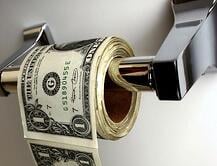Discover how optimizing your hotel's liquor inventory can slash costs and boost efficiency.
 The Impact of Liquor Inventory Management on Hotel Profitability
The Impact of Liquor Inventory Management on Hotel Profitability
Efficient liquor inventory management plays a crucial role in maximizing profitability for hotels. By closely monitoring and managing the inventory, hotel owners can reduce costs and prevent unnecessary losses. This is especially important in the context of liquor, as it is a high-value and perishable product. Effective inventory management ensures that hotels have the right amount of liquor stock, avoiding overstocking or understocking scenarios. By optimizing inventory levels, hotels can minimize wastage, improve cash flow, and ultimately increase their profitability.
Additionally, efficient liquor inventory management enables hotels to accurately track sales and consumption patterns. This data provides valuable insights into customer preferences and consumption trends, allowing hotel owners to make informed decisions about their liquor offerings. By aligning their inventory with customer demand, hotels can optimize their product mix and maximize sales revenue. This proactive approach to inventory management directly impacts the profitability of the hotel.
Furthermore, effective liquor inventory management helps prevent theft and shrinkage, which can significantly impact hotel profitability. By implementing robust inventory control measures, such as regular stock audits and implementing security protocols, hotels can reduce the risk of internal and external theft. This, in turn, protects the hotel's bottom line and contributes to a healthier financial position.
Key Strategies for Streamlining Your Hotel's Liquor Inventory
Implementing key strategies can streamline liquor inventory management in hotels and reduce owner costs. These strategies include:
- Conducting regular inventory audits: Regularly auditing the liquor inventory helps identify any discrepancies and ensure accurate stock levels. This allows hotel owners to address any issues promptly and prevent potential losses.
- Utilizing technology solutions: Implementing a reliable liquor inventory management software, such as the Scannabar liquor inventory application, can automate various inventory-related tasks. This software enables real-time tracking of inventory levels, generates reports, and provides insights into consumption patterns. By leveraging technology, hotels can streamline their inventory management processes and improve overall efficiency.
- Implementing standardized recipes and portion control: Standardized recipes and portion control help ensure consistency in drink preparation and minimize wastage. By training staff on proper pouring techniques and adhering to standardized recipes, hotels can avoid over-pouring and effectively manage liquor usage.
- Developing a comprehensive ordering system: Establishing a well-defined ordering system helps hotels optimize their liquor inventory. This includes setting par levels, establishing reorder points, and maintaining good relationships with suppliers. By having a clear ordering process in place, hotels can avoid stockouts and minimize excess inventory.
- Training and empowering staff: Properly trained staff play a crucial role in efficient liquor inventory management. Hotel owners should invest in training programs that educate staff about inventory control, proper handling of liquor, and the importance of accurate record-keeping. Empowering staff to take ownership of inventory management tasks can greatly improve efficiency and reduce owner costs.
By implementing these key strategies, hotels can streamline their liquor inventory management processes, reduce costs, and improve overall efficiency.
Technological Solutions: Harnessing Software for Better Inventory Control
Technological solutions, such as the Scannabar liquor inventory application, offer hotel owners a powerful tool for better inventory control. This software provides a range of features to streamline inventory management and optimize costs:
- Real-time inventory tracking: The Scannabar application allows hotels to track liquor inventory levels in real-time. This ensures accurate and up-to-date information, enabling proactive decision-making.
- Automated reporting: The software generates detailed reports on liquor consumption, sales, and inventory levels. These reports provide valuable insights into trends and help identify areas for improvement.
- Integration with POS systems: The Scannabar application seamlessly integrates with hotel POS systems, allowing for automatic updates of liquor sales data. This eliminates the need for manual data entry and reduces the risk of errors.
- Barcode scanning: The software supports barcode scanning, making the inventory management process more efficient and accurate. Barcodes can be easily scanned to update inventory levels and track sales.
- Forecasting and demand planning: The software utilizes data analytics to forecast future demand and assist with demand planning. This helps hotels optimize their inventory levels and avoid stockouts or excess inventory.
By harnessing the power of technology and utilizing software solutions like the Scannabar liquor inventory application, hotels can gain better control over their liquor inventory, reduce costs, and improve overall efficiency.
Case Studies: Success Stories of Improved Liquor Management in Hotels
Numerous hotels have successfully implemented efficient liquor inventory management strategies and witnessed significant cost savings. Here are a few success stories:
- Hotel XYZ: By implementing the Scannabar liquor inventory application, Hotel XYZ was able to reduce liquor wastage by 30% and optimize their ordering process. This resulted in a 15% reduction in liquor inventory costs and improved overall profitability.
- Hotel ABC: Hotel ABC streamlined their liquor inventory management by conducting regular audits and implementing portion control measures. These efforts led to a 20% reduction in liquor costs and improved cash flow.
- Hotel DEF: Through staff training and the utilization of technology solutions, Hotel DEF achieved a 25% reduction in theft and shrinkage, resulting in significant cost savings.
These success stories highlight the tangible benefits of efficient liquor inventory management in hotels and serve as inspiration for other establishments looking to optimize their operations.
Future Trends in Liquor Inventory Management and Cost Savings
The field of liquor inventory management is constantly evolving, and there are several future trends that can further enhance cost savings for hotel owners. These include:
- Artificial intelligence and machine learning: Advancements in AI and machine learning technology can revolutionize liquor inventory management. These technologies can analyze consumption patterns, predict demand, and optimize inventory levels, leading to significant cost savings.
- Internet of Things (IoT) integration: IoT devices can be utilized to track liquor inventory in real-time, monitor temperature and humidity levels, and prevent wastage. This level of automation and connectivity can streamline inventory management processes and reduce costs.
- Mobile applications: Mobile applications tailored specifically for liquor inventory management can provide hotel owners with on-the-go access to real-time data and inventory control features. This enables proactive decision-making and improves overall efficiency.
- Blockchain technology: Blockchain technology can enhance transparency and security in liquor inventory management. By creating an immutable and decentralized ledger, it can prevent fraud, improve traceability, and reduce the risk of counterfeit products.
By staying updated with these future trends and leveraging emerging technologies, hotel owners can further optimize liquor inventory management and realize significant cost savings.


 In the fast-paced world of hospitality, precision in inventory management can make or break your business. Scannabar leverages advanced technology to ensure that every bottle, can, or keg is accurately tracked. By automating inventory processes, you reduce the risk of human error and ensure real-time updates.
In the fast-paced world of hospitality, precision in inventory management can make or break your business. Scannabar leverages advanced technology to ensure that every bottle, can, or keg is accurately tracked. By automating inventory processes, you reduce the risk of human error and ensure real-time updates.
 The Impact of Liquor Inventory Management on Hotel Profitability
The Impact of Liquor Inventory Management on Hotel Profitability
 By Douglas R. Brown
By Douglas R. Brown

